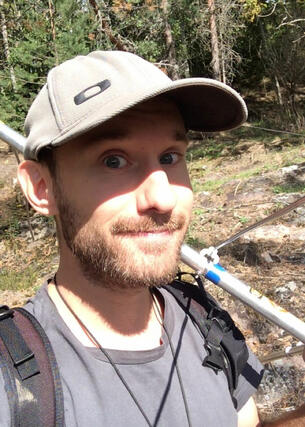Rasmus Mohr Mortensen is defending his dissertation for the degree philosophiae doctor (PhD) at the University of South-Eastern Norway.

The doctoral work has been carried out at the Faculty of Technology, Natural Sciences and Maritime Sciences at campus Bø.
You are welcome to follow the trial lecture and the public defence.
Summary
Wild animals move and distribute themselves in the landscape according to a variety of ecological factors. However, it can be challenging to study their natural behaviour as animals may utilize various environments that can be somewhat inaccessible for an observer, e.g., the aquatic environment. Additionally, the presence of an observer may cause changes in the expressed behaviours in the observed individuals, especially when animals are naturally shy or perceive humans as a threat.
In this thesis, we investigated how the movement behaviour of a territorial, semi-aquatic mammal, the Eurasian beaver, varied in time and space and according to various ecological factors by deploying sophisticated animal-borne dataloggers on free-ranging individuals.
We show how combining fine-scaled dead-reckoned movement tracks with acceleration-based behavioural segmentation can be used to identify when, where, and how much time free-ranging individuals invest into various behavioural activities, while reducing the observer limitations of the past. Altogether, this may improve our understanding of how animals perceive and chooses to move within the landscape according to various ecological factors.
Beavers performed dives of short duration and allocated little time to diving activities, which indicate the energetic constraints of semi-aquatic mammals. Timing and location of dives were highly shaped according to availability of food resources, building materials, and activity peaks of predators, which indicate the importance of aquatic behaviours.
Beavers strongly selected, both aquatic and terrestrial, habitats located closer to the riverbank, as well as habitats located closer to the territory borders, indicating their strong territorial behaviour. Habitat use and movement patterns varied spatially, temporally, and ecologically among individuals. This indicate how movement behaviours in territorial semi-aquatic mammals as the beaver are highly shaped according to varying energetic requirements of moving in the physical landscape, access and exploitation of resources in the landscape, the individuals’ perception of risk and disturbances in the landscape, and social interactions within and between family groups.
Although technological advances in animal-borne telemetry devices have improved our capabilities to study animals’ movement behaviour remarkably, we often need to capture individual animals multiple times to track them and obtain ecological information. However, repeated capture and handling of individuals can have considerable short- and long-term effects and affect the reliability of our ecological research. We found that repeated capture and handling may cause highly territorial animals to exploit the territory, temporally and spatially, in a less predictable manner to reduce potential risk from predators and researchers in the field.
Repeated capture and handling may also affect important life stages in individuals, but we found that individuals over time appear to habituate to the capture stress. This illustrates the importance of long-term individual-based studies to understand natural behavioural dynamics and improve the reliability of our conclusions.
